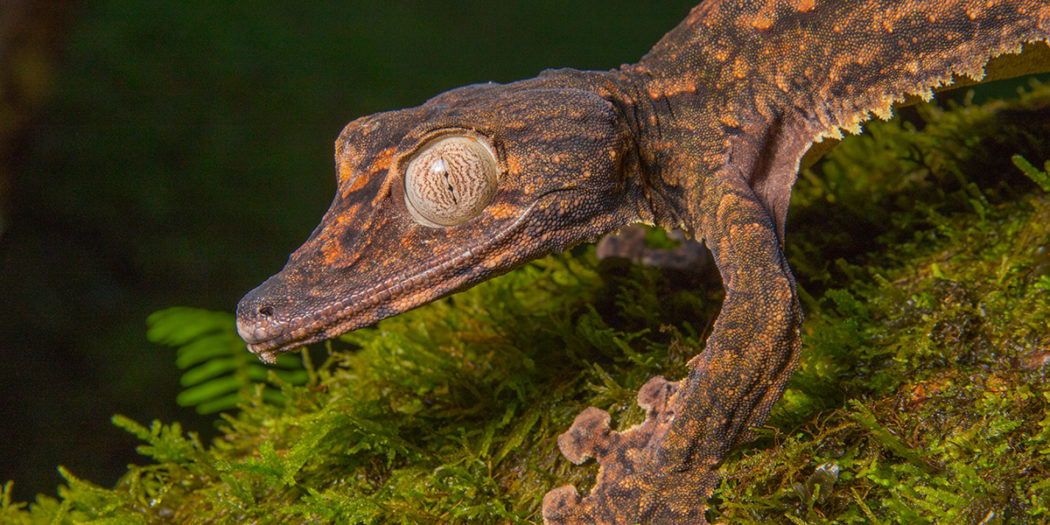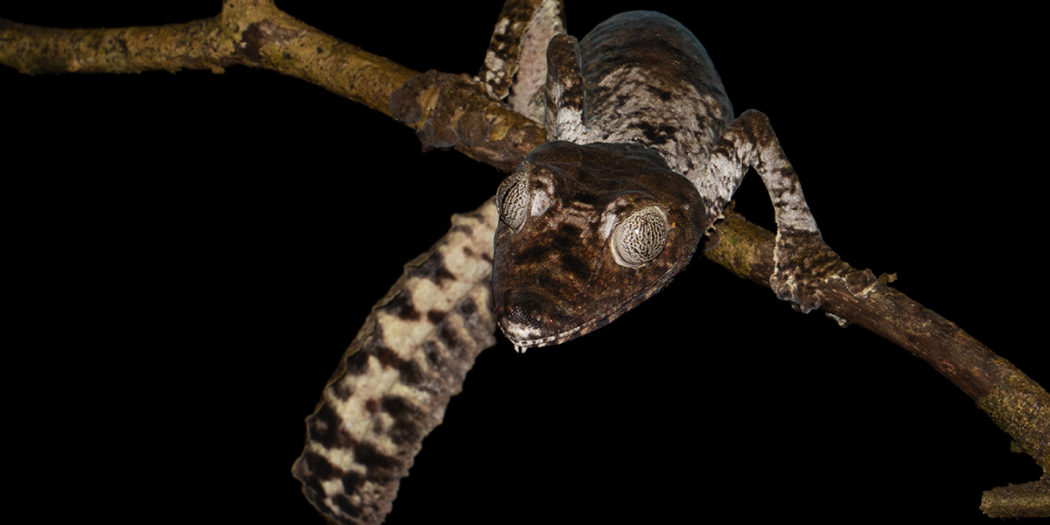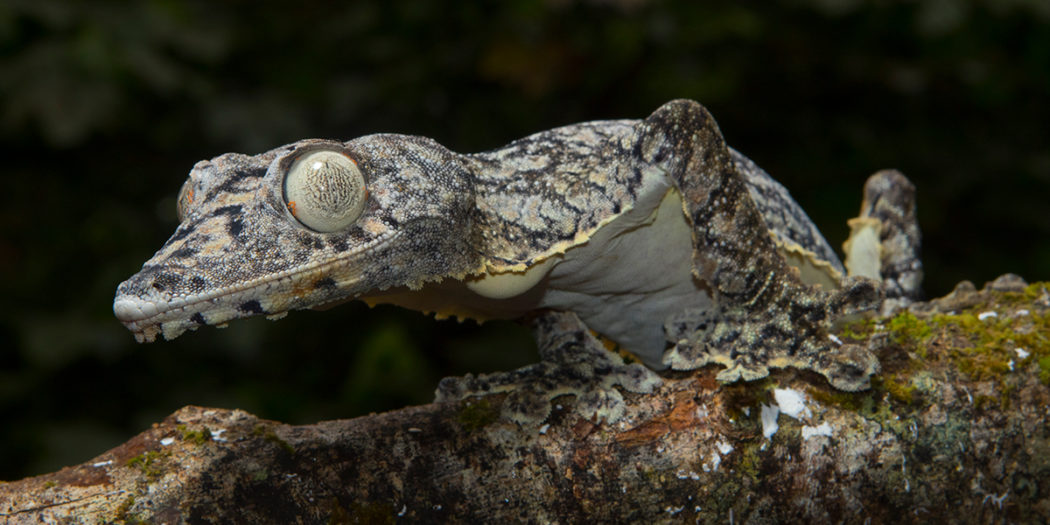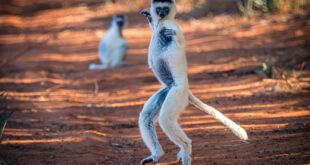Madagascar’s reptiles offer many a superlative. The smallest lizard in the world, the most colorful chameleons, the smallest iguana, the rarest tortoise – all that is missing is a record-breaking gecko. The Giant Leaf-tailed Gecko (Uroplatus giganteus) fills exactly this gap. It measures up to 34.5 cm and is thus the second largest gecko in the world.
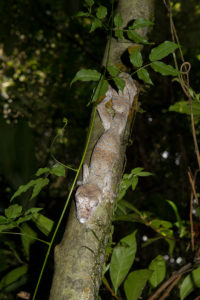
The giants among the leaf-tailed geckos live in the wet rainforests of northern and northeastern Madagascar. They can be found particularly well in the Amber Mountain and Marojejy National Parks. This species is never found in destroyed or human-populated habitats, the leaf-tailed geckos need the intact, original jungle. The giant gecko was first described by German researchers in 2006. The eyes are a special feature of the species: like no other leaf-tailed gecko, it has brown, concentrically arranged lines on its white iris.
During the day, giant leaf-tailed geckos camouflage themselves by nestling flat against arm-thick tree trunks without moving at all. They always sit upside down and like to sit at heights of two meters and more. The lichen-like patterns on their skin and the small skin appendages make the contours of the giant leaf-tailed gecko almost disappear on the almost identical looking bark. Despite their size, it, therefore, takes good eyes and a little skill to spot these animals in the rainforest.
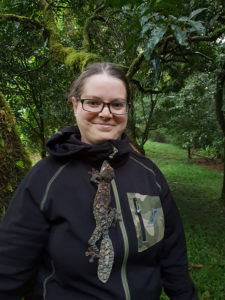
Giant Leaf-tailed Geckos are solitary animals and on others of their kind usually not too good at talking. Only for mating, they meet once a year during the rainy season. The female then lays two eggs well hidden under leaves, from which the new generation of giant leaf-tailed geckos hatches after a few weeks. They are independent of their parents from the first day on and go hunting insects themselves immediately. The later perfectly camouflaged lichen pattern only develops over time. Young animals are often still relatively light-colored and less patterned.
Due to the dwindling habitat caused by slash-and-burn and illegal logging, the giant leaf-tailed gecko is now considered an endangered species. The population of the giant leaf-tailed gecko is declining at the same rate as the rainforests in Madagascar are becoming smaller. It is to be hoped that the giants of the jungle will have a long-term chance of survival in Madagascar through species and nature conservation.
 MADAMAGAZINE Your Magazine about Madagascar
MADAMAGAZINE Your Magazine about Madagascar




